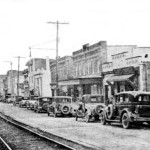Tunnel vision: History of famed ‘Liberty Tubes’

The Liberty Tunnels provide citizens an easy way to travel between Pittsburgh and the surrounding South Hills areas, including Brookline. Photo by Leah Devorak.
By: Carrie Garrison
Pittsburgh, often touted as the “City of Bridges,” is also home to an engineering marvel: the Liberty Tunnels.
Opened to traffic in 1924, the “Liberty Tubes” go through Mount Washington and lead to many suburban areas, including Brookline.
The Tunnels were originally proposed in 1909 as a way to ease commuter access to the South Hills. There were two plans proposed: the “high tunnel” and the “low tunnel.”
The “high tunnel” placed both the northern and southern ends of the tunnel higher than they are today. The “low tunnel” would have allowed access to Saw Mill Run Valley and had no direct link to a Monongahela River crossing.
After much debate the “low tunnel” was adopted, but the Allegheny County Commissioners ruled it would link with a bridge across the Monongahela, today’s Liberty Bridge. The plans were approved,
and Pittsburgh’s South Hills saw rapid economic expansion.
“Because of the new Twin Tubes, as they were commonly called, real estate sales and housing development in the southern communities entered another boom phase,” according to the Brookline Connection. “Three farms in Brookline that were appraised at $68,000 in 1920 saw their property valuation increase to $1.3 million.”
The tunnel’s rather hasty opening led to a life-threatening error. Five months after its unveiling drivers caught in congestion experienced carbon monoxide poisoning within the tunnel.
“While vehicles idled inside the tunnels, many motorists succumbed to the dangerous buildup of carbon monoxide gas and literally passed out at the wheel of their cars,” according to Brookline Connection. “Engineers worked with the U.S Bureau of Mines to install a ventilation system consisting of two pairs of 200-foot vertical shafts that continuously pumped fresh air into the tunnels.
By 1925 the tunnel’s new ventilation system made it safe for commuters. As a result, the Brookline community was officially opened to economic growth and population expansion.
“Suburban areas such as Brookline … and other communities grew substantially after the $6 million Liberty Tubes opened,” according to the Pittsburgh Post-Gazette.
Courtney Stosko, librarian at the Carnegie Library of Pittsburgh Brookline branch, agreed that the tunnels have opened the South Hills to the rest of Pittsburgh.
“The development of the Liberty Tunnels definitely gives people an awareness to Brookline,” Stosko said.
Audrey Lacome, library services manager at the library’s Beechview branch, said that the tunnels have saved Pittsburgh residents from overwhelming commuter traffic.
“Where would we be without the Liberty Tunnels? Rush hour would be crazy!”
 Previous Post
Previous Post Next Post
Next Post